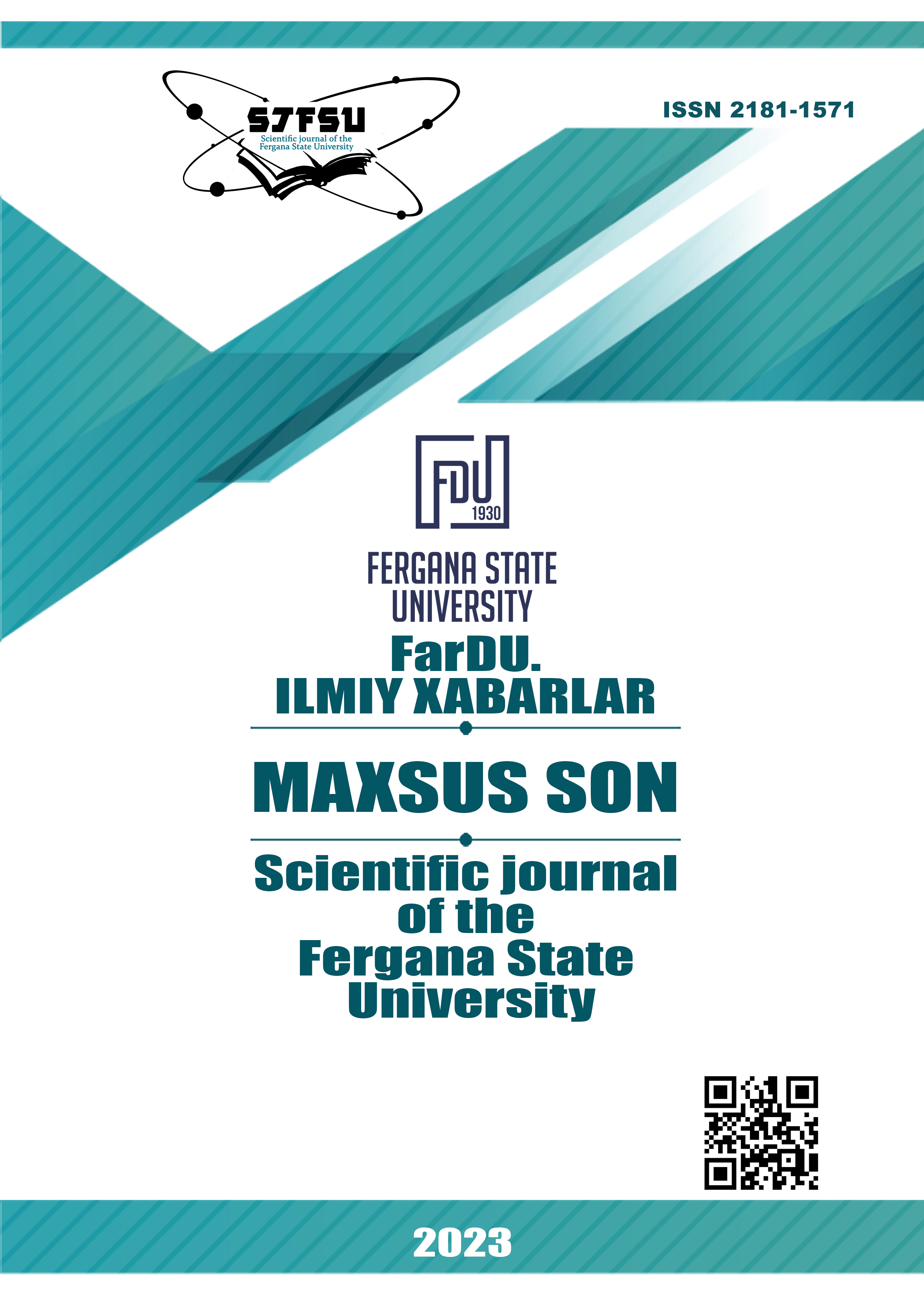LEXICAL-SEMANTIC AND NATIONAL-CULTURAL CHARACTERISTICS OF AGE REPRESENTATIVES IN FRENCH FAIRY TALES
Keywords:
lexicon, semantics, representations, French, national character, fairy tale, text, ingvokulturems, popular nouns,Abstract
A fairy tale is a form of text that hides events and lexical units that indicate the culture of the people and a precedent (an example of the same type of events that will happen after it). According to one of the most famous legends of the French, he lives in a castle on top of the mountains and guards the treasure. A small percentage of the content of fairy tales marked with the sign of culture testifies to French rationalism: the French, in explaining this or that phenomenon and phenomena, rely more on consciousness and thinking than on feelings and beliefs (beliefs). relies on It is a very difficult task to determine the character of the people and the specific features that make it up, and the characteristics of the personality of the French nation are also characteristic of many other nations. Nevertheless, the isolated cultural dominants are linguistic tools that express the "French national character" at the highest level and distinguish the national characteristics of the French person.
References
Akhrorova R.U. “Yosh” tushunchasi lingvistik talqini. Scientific Journal Impact Factor (SJIF) : 5.938. №2. 2023.03.16. –B.187-190. ( Akhrorova R.U. Linguistic interpretation of the concept of "age". Scientific Journal Impact Factor (SJIF) : 5.938. №2. 2023.03.16. –B.187-190.)
Akhrorova R.U. Lexical-semantic expression of early youth/jeunesse in french. International scientific and practical in "Modern philological paradigms: interaction of traditions and innovations II". №41. 2022.04.05. –B.166-168.
Oлшанский Е.О. Лингвокультурология конце ХХ века: итоги, тенденции, переспективы// Лингвистические исследования в в конце ХХ века. –М.:ИНИОН, 2000. – С.34. (Olshansky E.O. Linguoculturology at the end of the twentieth century: results, trends, prospects // Linguistic research in the late twentieth century. –M.:INION, 2000. – P.34.)
Downloads
Published
Issue
Section
License
Copyright (c) 2024 Scientific journal of the Fergana State University

This work is licensed under a Creative Commons Attribution-NonCommercial-NoDerivatives 4.0 International License.
Most read articles by the same author(s)
- , LINGUISTIC INTERPRETATION OF THE CONCEPT “AGE” , Scientific journal of the Fergana State University: No. 3 (2024): Scientific journal of the Fergana State University. Application set (Social humanities sciences)
- , , THE ROLE OF PROVERBS IN LITERARY WORKS , Scientific journal of the Fergana State University: No. 3 (2024): Scientific journal of the Fergana State University. Application set (Social humanities sciences)
- , , THE ROLE OF ENGLISH IN THE STANDARDIZATION OF TOURIST TERMS IN UZBEK PRACTICE , Scientific journal of the Fergana State University: No. 6 (2024): Scientific journal of the Fergana State University ADDITIONAL COLLECTION (Social humanities sciences)

